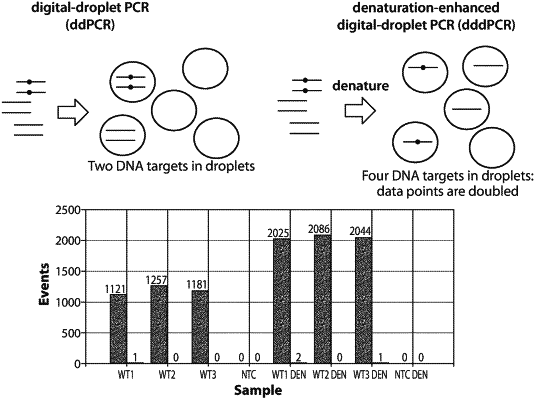| CPC C12Q 1/6848 (2013.01) [C12Q 1/6806 (2013.01); C12Q 2600/156 (2013.01)] | 21 Claims |

|
1. A method for increasing the number of compartments in which a target sequence is identified by an assay, comprising:
(a) obtaining a sample comprising double-stranded DNA comprising a target sequence, wherein the sample comprises double-stranded DNA comprising complementary strands of unequal length;
(b) producing blunt ends on the double-stranded DNA;
(c) denaturing the double-stranded DNA in a sample to form single-stranded DNA;
(d) partitioning the sample of formed single-stranded DNA into a multitude of compartments, wherein a majority of the compartments contain either one or no single-stranded DNAs comprising the target sequence; and
(e) assaying to identify compartments containing target sequences;
wherein the producing blunt ends of step (b) and denaturing of step (c) increases the number of compartments in which the target sequence is identified by the assaying of step (e) compared to a method that does not comprise the producing blunt ends of step (b) and denaturing of step (c).
|